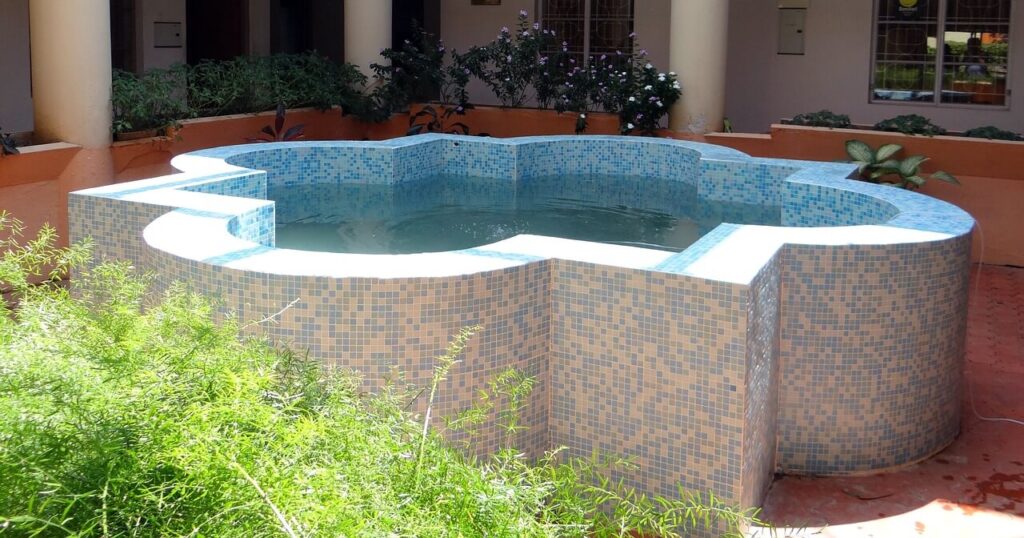- This topic is empty.
- PenulisTulisan-tulisan
- Februari 25, 2025 pada 12:36 pm #574145

Concrete ponds are a popular choice for many farmers and enthusiasts due to their durability and ability to hold water for extended periods.
They are commonly used in aquaculture, ornamental ponds, and for various water storage purposes. However, despite their many advantages, concrete ponds also come with some significant disadvantages that can affect their overall effectiveness and cost.
In this article, we will explore the key disadvantages of concrete ponds, helping you to make a more informed decision if you’re considering building one.
1. High Initial Construction Costs
One of the main drawbacks of concrete ponds is the high cost of construction. Concrete, being a heavy and durable material, requires a more expensive setup compared to alternatives like plastic, fiberglass, or liner ponds.
The labor required for pouring and curing concrete adds to the expense, and any custom designs or reinforcement materials further increase the cost.
For smaller-scale projects, the upfront costs of building a concrete pond may not be justified, especially when other materials could provide a more affordable option.
2. Cracking and Structural Damage
Over time, concrete ponds are susceptible to cracking and structural damage. This can occur due to shifting ground, extreme temperature changes, or the natural settling of the structure.
Cracks can allow water to seep out, leading to water loss and, in some cases, compromising the structural integrity of the pond. Even with proper maintenance, the potential for cracking remains a concern.
Once cracks appear, they can be difficult and costly to repair, which makes concrete ponds less ideal for certain applications where long-term reliability is crucial.
3. Algae Growth and Maintenance Challenges
While concrete ponds are sturdy, they can be prone to algae growth. Concrete surfaces can have small pores that provide a habitat for algae, especially when exposed to sunlight and organic material.
This growth can not only affect the aesthetic appearance of the pond but also interfere with water quality, making the environment less healthy for fish or plants.
Regular cleaning and maintenance are required to manage algae and other buildup, which can be time-consuming and labor-intensive. In contrast, other pond materials, such as plastic or rubber liners, are less likely to promote algae growth and are easier to clean.
4. Temperature Fluctuations
Concrete ponds can also experience significant temperature fluctuations. Concrete tends to absorb and retain heat, which can cause the water temperature in the pond to rise during hot weather and drop rapidly during cold weather.
These temperature swings can stress fish and other aquatic life, potentially leading to health problems or even fatalities in extreme cases.
Unlike natural ponds or those made from flexible materials, concrete ponds do not have the insulating properties needed to stabilize water temperature, which can be a serious disadvantage in certain climates.
5. Limited Aesthetic Flexibility
While concrete ponds can be shaped and sized according to specific requirements, they often lack the aesthetic flexibility offered by other pond materials.
The gray, industrial appearance of concrete may not blend well with certain garden or landscape designs. It can also require additional work to enhance its appearance, such as adding tiles, stones, or paint to achieve a more natural look.
For those seeking a more decorative pond or one that harmonizes with natural surroundings, concrete may not be the most visually appealing option compared to alternatives like fiberglass or preformed plastic ponds.
In conclusion, while concrete ponds offer durability and strength, they come with several disadvantages that may outweigh their benefits in certain situations.
The high initial cost, susceptibility to cracking, maintenance challenges related to algae growth, temperature fluctuations, and aesthetic limitations can all pose significant drawbacks.
For those considering building a pond, it is important to weigh these disadvantages against the advantages and consider alternative materials that may better suit their needs.
Ultimately, choosing the right pond material depends on factors such as budget, intended use, and the local climate, ensuring that the final decision provides both functional and long-term value.
Read Also: Fish farming problems and solutions: Addressing Challenges For Sustainable Aquaculture
- PenulisTulisan-tulisan
- Anda harus log masuk untuk membalas topik ini.

